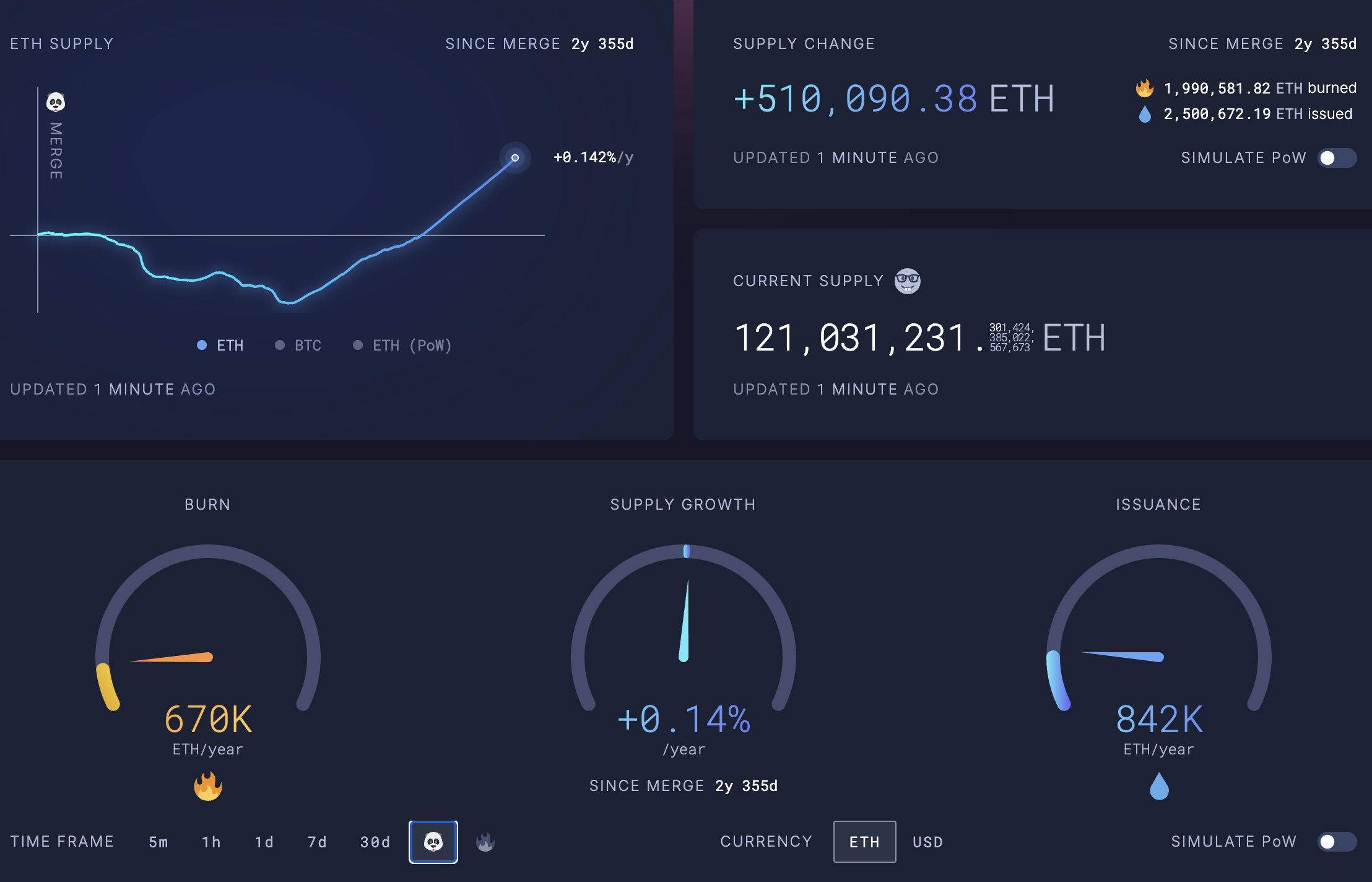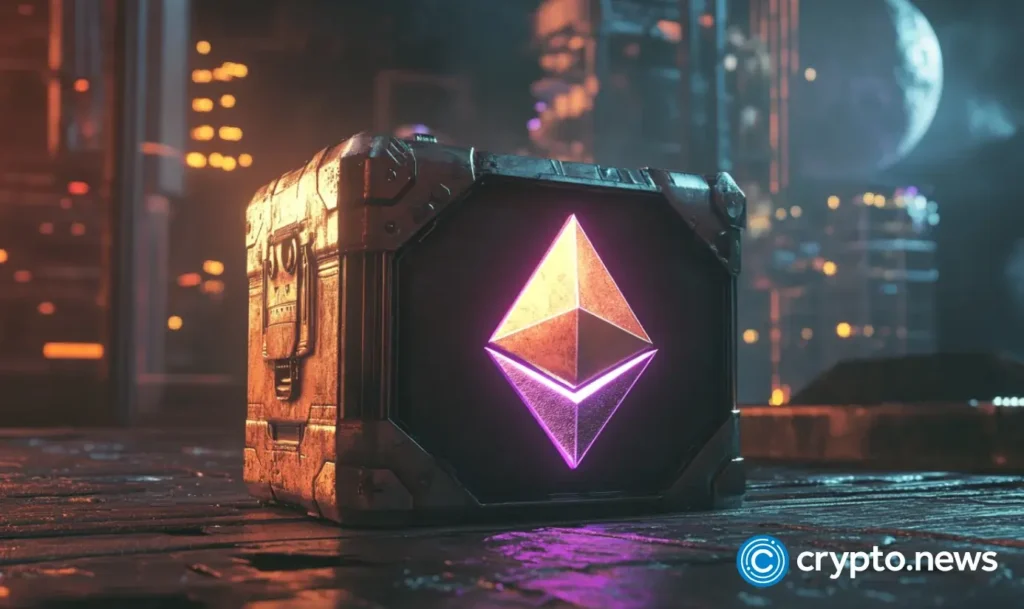- Ethereum does not just disappear after token burn, it can be issued in the form of Burned ETH or BETH.
- The Ethereum Community Foundation’s Zak Cole created BETH to keep a tokenized record or proof of burns.
- BETH is not redeemable for Ethereum at any point in the future; it is simply a receipt for burned Ether, raising questions about its value.
- Ethereum co-founder Joseph Lubin believes BETH will see community adoption in the future.
- It remains to be seen how the market prices BETH and whether the token drives demand among Ethereum holders.
Ethereum’s EIP-1559 upgrade has led to the burn of 1.99 million Ether tokens, worth $8.8 billion. The burn mechanism consistently pulls Ether from the supply, contributing to the increase in the value of the remaining tokens in circulation. The latest development in the burn mechanism is the issuance of Burned ETH, BETH token. BETH is the tokenized proof of Ethereum burn, issued as an immutable ERC-20 token.
Table of Contents
Burn Ethereum, get token
Ethereum’s (ETH) burn mechanism kicked in with the August 2021 upgrade. EIP-1559 instilled a burn mechanism to permanently remove the ETH base fee from circulation, effectively reducing the circulating supply of the token.
The mechanism has led to a whopping 1.99 million ETH tokens burnt to date, valued at $8.8 billion at the time of writing. Until recently, burning Ethereum meant losing the token to the void, no redemption allowed.
However, Zak Cole of the Ethereum Community Foundation created BETH, a token that represents Burned ETH. BETH is a tokenized representation and can be considered a record of burned Ethereum.
BETH cannot be redeemed for Ethereum at any point in time; however, it is an ERC-20 with a value of its own.
BETH has introduced levels to burning Ethereum now, bringing new ways for Ethereum holders to benefit from the token. At the network level, Ethereum supply will be reduced with the burn mechanism introduced by EIP-1559, as more apps and users send tokens to the burn address.
At the same time, BETH, the immutable token, will preserve the permanently destroyed ETH token’s proof of burn on-chain.
BETH functions in a straightforward manner. Users send Ethereum to the protocol to burn; the ETH is moved to the burn address. An equivalent amount of BETH is allocated to the user. One burned Ethereum token returns 1 BETH, and so on.
BETH is an ERC-20 token and not a wrapper; users cannot redeem the original token, and it is an on-chain receipt of the burn transaction.
Burning Ethereum, therefore, serves a dual purpose now, reducing ETH supply from circulation and earning a new token. The community members have raised questions on the value of BETH across social media platforms; however, Ethereum maximalists like co-founder Joseph Lubin see value and believe that the market will embrace the model soon.
Value of BETH
BETH, the immutable ERC-20 token, represents the permanently destroyed Ether tokens, but there is no direct way to value it. BETH has a total of 116 holders, up 8.6% in the last 24 hours. Traders can watch the contract for further increase in the number of holders, a sign of the token’s adoption and acceptance in the Ethereum community.
Typically, when a token is burned, the value disappears, and instead, the value of the remainder of the circulating supply increases. BETH attempts to attach it to the receipt of on-chain token burn; therefore, it remains to be seen whether it is valued 1:1 with Ethereum.
Given that BETH holders can never receive the Ethereum that they burned for the tokenized receipt, the valuation of 1:1 holds, but the market is yet to price BETH across exchange platforms.
BETH is a transparent record for the burn of a valuable asset that was both tradeable and held value, therefore holding potential for being priced at par. Across DeFi, there is potential for burned Ether being used in governance or for Layer 2 chains to prove that they burned a set quantity of Ethereum, like Linea, where every transaction burns ETH tokens.
While BETH is a proof of destruction, it introduces a layer to the idea of effectively reducing tokens from supply, while assigning them new value, and only 0.457 BETH have been minted so far, meaning we are early.
Ethereum gains from token burn
Typically, whenever an Ethereum holder sends a transaction on the ETH network, there is an attached cost, or fee. The fee is divided into two parts, the base fee and the priority fee.
The base fee is determined by network demand, and users can pay a higher priority fee to process transactions faster. This base fee is what is burned, while miners receive the priority gas fee.
The burned part or the base fee is permanently removed from circulation. Token burn plays a key role in keeping the ETH supply in check, even as new tokens are issued. The net change in Ethereum’s supply per year is 0.14%, per data from Ultrasound Money.

Ethereum has gained nearly 200% since the Merge was executed. Factors like controlled circulating supply (through ETH token burn), consistent demand as the value of ETH held by traders grows through reduction of token supply, and institutional demand have contributed to the rally.
Ethereum’s token burn has become a centralized tenet to its valuation by institutional and retail investors, and BETH is yet to unlock higher adoption and get valued by the market. The team has introduced BETH as 1:1 with Ethereum; the market is yet to adopt the valuation model, as BETH currently has a supply of 0.457, and fewer than 120 users, per Etherscan data.
Disclosure: This article does not represent investment advice. The content and materials featured on this page are for educational purposes only.



